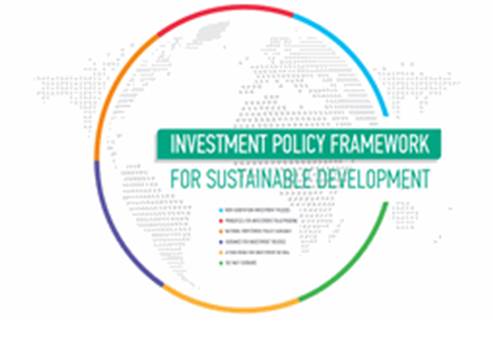Investment Facilitation: An Action Menu
Mobilizing investment and maximizing its positive contribution to growth and sustainable development is a priority for most countries. Concerted efforts are required to boost cross-border investment, within the context of an overall policy framework aimed at maximizing the benefits of such investment for host countries and minimizing any negative side effects.
Numerous initiatives aimed at stimulating investment exist that try directly to affect the risk-return ratio for investors. Such initiatives may try to lower risks by providing guarantees, by sharing risks or by offering certain protections. Or they may try to increase potential investor returns through incentives.
In the most common international instruments for investment promotion, relatively little attention is being paid to ground-level obstacles to investment, such as a lack of transparency on legal or administrative requirements faced by investors, lack of efficiency in the operating environment, and other factors causing high costs of doing business.
Addressing such barriers to investment could provide a real boost to both cross-border and domestic investment, complementing direct stimulus instruments (guarantees, incentives), and reinforcing trade facilitation efforts – given that 80% of trade is driven by the international production networks dependent on investments from multinational firms.
Investment facilitation initiatives could, in fact, mirror many elements common in trade facilitation. They could include improvements in transparency and information available to investors; they could work towards efficient and effective administrative procedures for investors; they could enhance the consistency and predictability of the policy environment for investors through consultation procedures; they could increase accountability and effectiveness of government officials and mitigate investment disputes through ombudspersons; they could include cross-border coordination and collaboration initiatives such as regional investment compacts or links between outward and inward investment promotion agencies; and they could include technical cooperation and other specific support mechanisms for investment.
The Action Menu proposed here for discussion is based on UNCTAD's Investment Policy Framework – which proposed action on Investment Facilitation in its first edition in 2012 – and rich experiences and practices of investment promotion and facilitation efforts worldwide over the past decades.
The Action Menu proposes 10 action lines with a series of options for investment policymakers to adapt and adopt for national and international policy needs: the package includes actions that countries can choose to implement unilaterally, and options that can guide international collaboration or that can be incorporated in international investment agreements. The Action Menu should be read in the broader context of UNCTAD's Investment Policy Framework for Sustainable Development.
The proposed Action Menu is preliminary research and does not represent the official views of UNCTAD member States or the UNCTAD Secretariat. Comments and ideas will be invaluable to the further development of the Action Menu.
Please submit your feedback to Mr. James Zhan, Director of the Investment and Enterprise Division at UNCTAD via DIAEinfo@unctad.org.
Download the preliminary UNCTAD Discussion Note (Version 2):

















Comments (3)